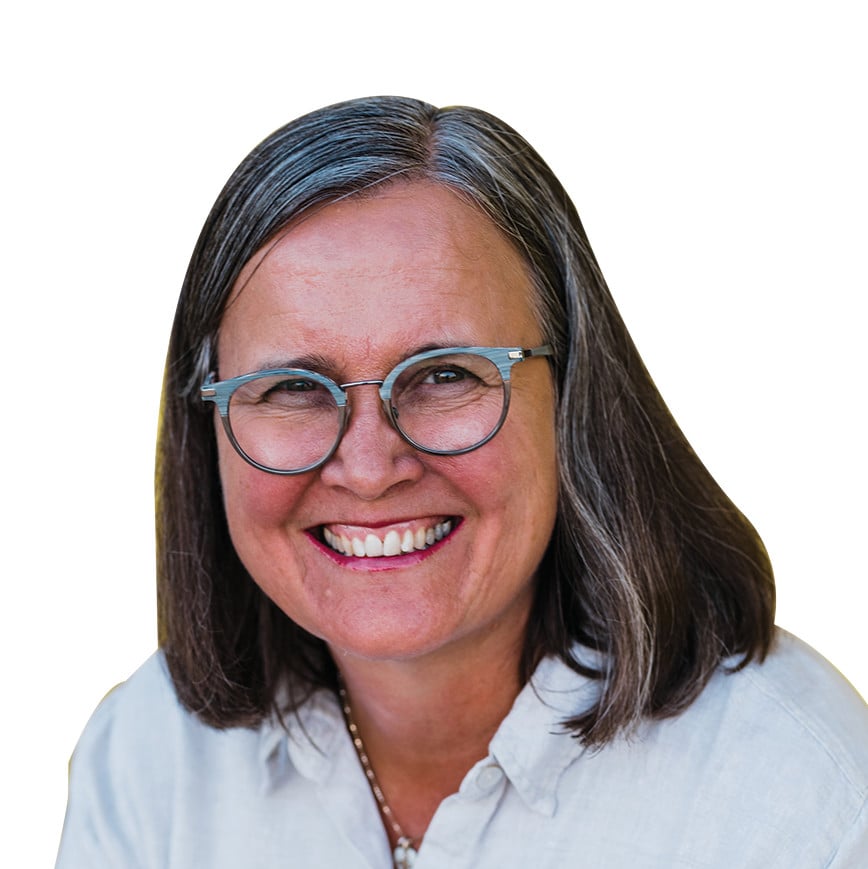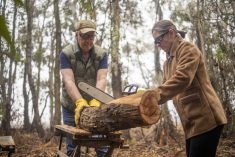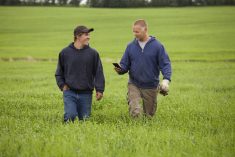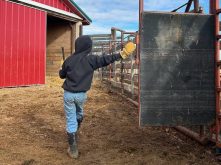Last month, in the U.S., we heard Steven Bohr of Next Generation Ag Advocates encourage young farmers with tools for transition. The average price per acre in Iowa, as of last Nov. 1, is estimated at US$11,835, and 34 per cent of the land has owners over 75 years of age. Sixty per cent of the land is owned by those 65 and older.
Landowners are the oldest in history, there are all-time-high land values, and the cash flow to acquire land is outside of long-term profitability, according to Bohr.
Read Also

Gentle treatments for pain in the neck
Heading toward year-end, people unknowingly tense up against the cold and busyness, causing neck pain that can often be treated with appropriate support and gentle mobility, athletic therapist Kathlyn Hossack says.
The next generation of producers, Bohr says, looks like this in Iowa:
- 68 per cent of farmers have no children who currently farm.
- 51 per cent of farmers have not identified a successor.
- For each farmer under the age of 35, there are six over age 65.
I see an opportunity here for young farmers to be developing relationships with non-related parties.
Bohr uses a worksheet to also put out the idea that there is a price to buy family land (discounted after debt) — what he calls “family land value,” not fair market value. I call this “fair family price.”
READ MORE: Prairie farmland values continue to increase
Regardless, the hard conversations are around expectations about who can purchase farm assets, and who can afford to cashflow the purchase of farm assets.
The other part of this storm is the expectation of parents to divest farm assets to give gifts or inheritance to non-farm heirs. Somewhere the perfect storm is begging a new money script from parents as to what is a reasonable expectation for the transfer of farm wealth — that is, if the family really wants to keep the farm business intact.
Bohr’s solutions:
- Know your role as a landowner, producer, or interested third party. Bohr talks about a century match, leasing agreements, advisory role and non-operating landowners. He is skilled at helping match retiring farmers to the next generation of landowners. This is your chance to tell your story often and build relationships with bachelor farmers, or farm owners who have no successors, to create new non-related partnerships. (Read my blog on landlord relationships.)
- Partner for economies of scale. Share equipment, use input buying groups, and gain financial benchmarking data with peer networking groups. Terry Betker of Backswath and Rob Saik of PowerFarm have used these groups well in Western Canada to help farmers grow with group coaching.
- Understand how to use the tools in your toolbox. Examples include corporation shareholder agreements; beginning farmer programs; investment strategies for buying land; and in the U.S., basis step-up.
- Understand tax brackets, bonus depreciation and lease-to-own leases. (Ask really good questions of your accountant and ask for clarification when you don’t understand!)
- Understand the marketplace. Options for the land include farmer ownership, division of land, corporate land, trusts, and combinations of those options. Give heirs a reason to want to own land, and let siblings “row the boat together” to have skin in the game with the success of the farmland ownership. Discuss the different approaches and outcomes with fair market value versus family market value. What are workable options for keeping the land together?
- Be prepared for understanding the consequences of your transition decisions — for example, will probate.
- Prepare to compete with the “big boys” — the farmers with ability to buy land. Are you developing land acquisition strategies with neighbourhood relationships and well-written leases? Landowners are looking for stewardship and care of the land. They want to share similar philosophies for farming and a nice person to work with. Producers want a long-term relationship and a way to learn and carry on their legacy while providing a great way of life for their family. Dick Wittman, an instructor with Texas A&M’s TEPAP ag executive program and farm management specialist from Idaho, would argue there are lifestyle farmers; those farmers who need to join forces with other producers; and then the “big boys.”
- Farm without the bank — that is, have working capital more than 100 per cent of income. Dr. David Kohl, from Virginia Tech, would love this recommendation. How much are you protecting and building working capital?
- Understand the difference between an “exit” strategy — when the farmer spends down the business over time with the intention of liquidation — and an “entrance” strategy, where you are growing into the operation to earn respect and trust. In Canada we call this the “successor effect,” where the young farmer’s passion to farm drives growth of the farm to support more than one family. Bohr also visualizes an entrance strategy where young farmers approach a mature landowner with a business plan. Whatever approach you take, ask for help! Network with key people and find a way to partner with a mentor.
- Identify what matters and what you can control. Does your family serve the business, or does the business serve the family? Be clear about what you are focused on, then execute.
Book some time to chat with Steve Bohr at 1-800-375-4180 or visit the Next Generation website for more information. I found his challenges and ideas refreshing, as he is practical and highly experienced in seeing scenarios that can work. Whether you farm in Canada or the U.S., there are nuggets here for you to weather the storm and be the captain of your own ship. Ask for help!

Steve Bohr’s “farm succession perfect storm”
- Age of landowners: 60 per cent over 65.
- All-time-high land values.
- Cash flow to acquire land is outside of long-term profitability.
- Farm is a legacy asset.
- Control is difficult to surrender, but is required to transfer for transition.
- Quality of advice from specialists may be limited by location, experience and incentive.
- Interest rates are changing and becoming higher.
- Longevity of landowners will see the “sandwich” generation losing ownership opportunities.
- Family fights over “fair” versus “equal” are needing to view performance-based pay versus inheritance-based pay.
- Farming is difficult, and each generation produces fewer farmers who are willing or able to take risk.
- Tax law uncertainty with estate, income, capital gains (and basis in the U.S.).
- The deferral mentality: procrastination causes owners to be susceptible to emotional decision-making mixed with greed, hope and fear.
















